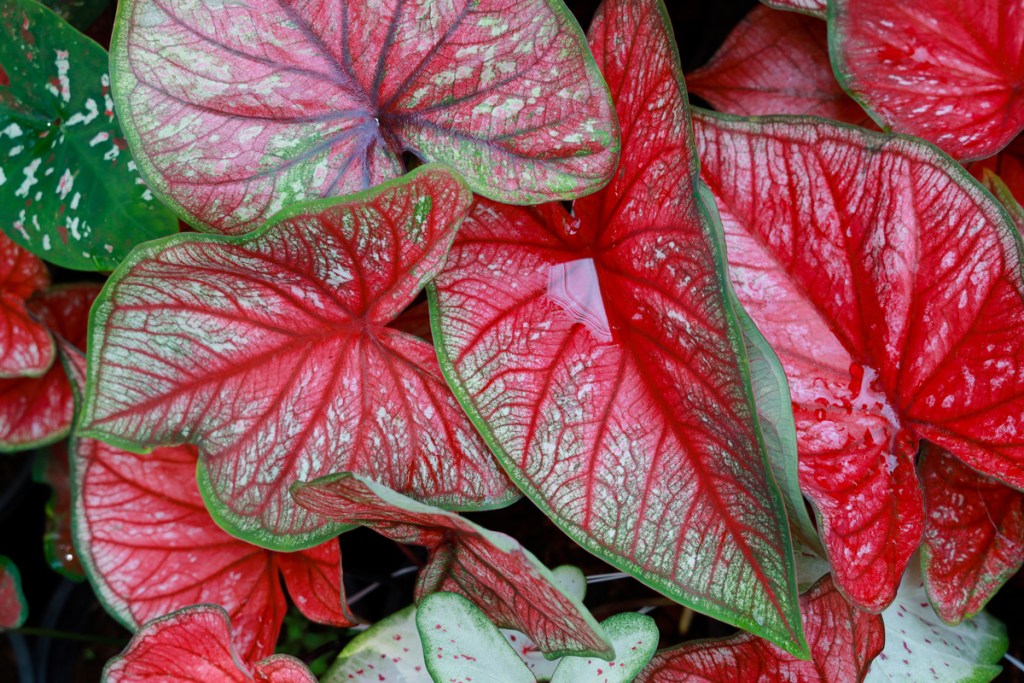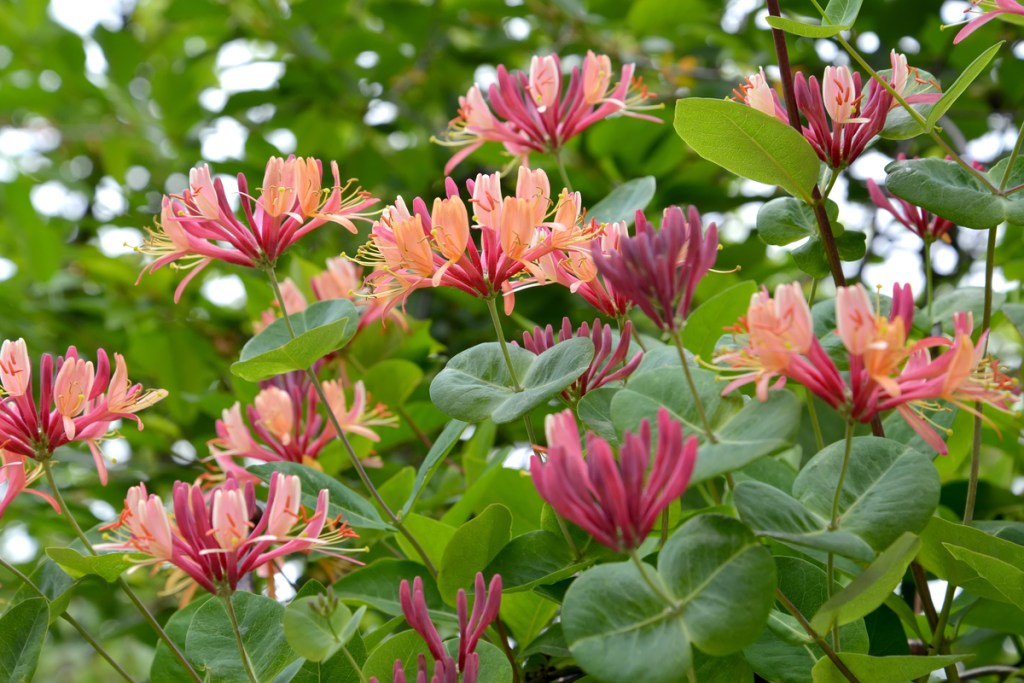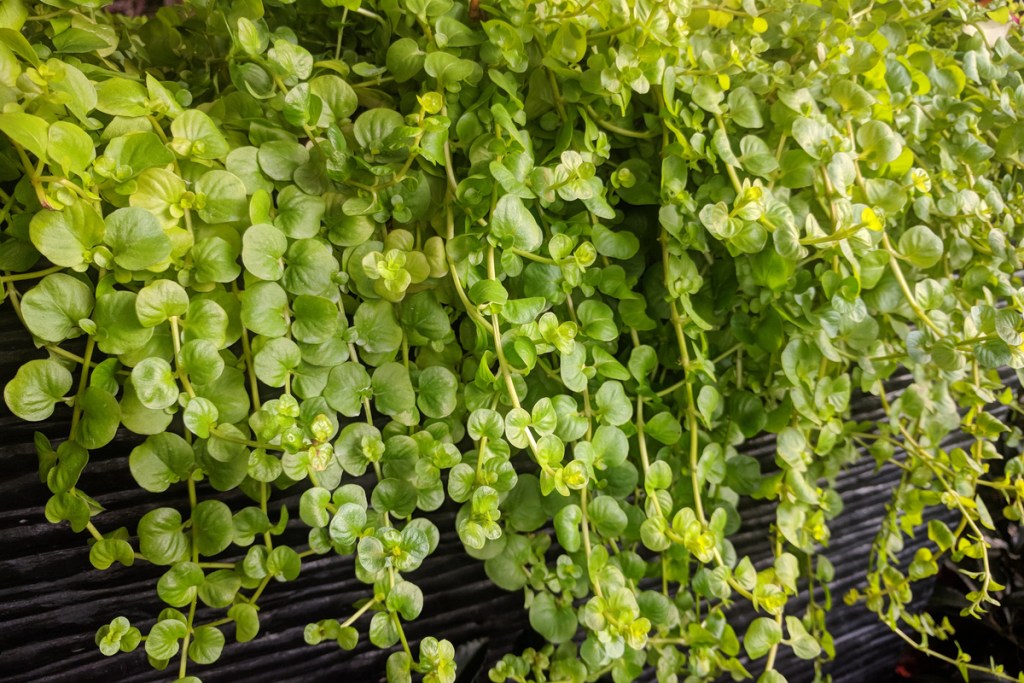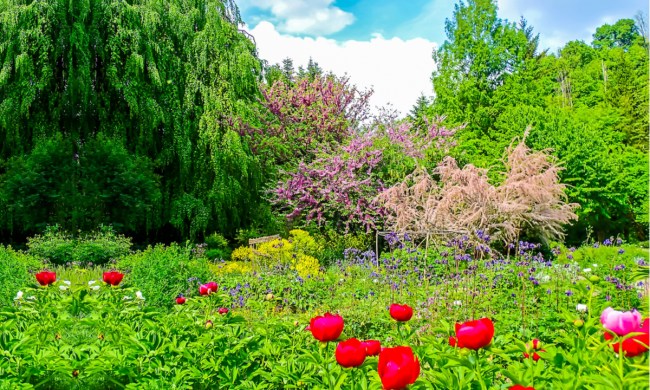Vertical gardens are an amazing, versatile way to grow a lot of plants in not a lot of space. There’s room for creativity and innovation with vertical gardens, and they can take any number of forms. If the amount of options seems overwhelming to you, you’re not sure where to start, or you’re just looking for some inspiration for your own vertical garden, you’re in the right place! Here are our favorite eight plants for various types of indoor vertical gardens, including some tips on what types of vertical gardens they’d do well in.
Caladium
Caladium is a great plant for tiered container gardens. They have large, heart-shaped leaves that are typically green, white, and pink. With proper support, caladium can be grown in fully vertical gardens, like living walls. Caladium is perfect if you want to include some shade-loving plants, as their large leaves can offer shelter to other plants. This plant is great if you want a pop of color, even when flowers aren’t blooming.

Coleus
If the idea of having colorful foliage sounds great, but the large leaves of the caladium are a bit much, try coleus on for size. This plant has vibrant leaves but is much smaller than caladium. Coleus is an excellent space filler, fitting into most gaps without making the overall arrangement too busy. It comes in a range of colors, from deep purples to vibrant reds to calm greens — so there’s a coleus for any vertical garden.
Pothos
Pothos is a pleasant and simple vining plant. It’s perfect for beginners as it’s tolerant of many conditions. The rich green color of its leaves can be used to balance a more colorful arrangement. Pothos is a vining plant, which makes it an excellent choice for living walls. As far as vines go, though, pothos is perhaps one of the easiest plants to control and can be used in tiered container gardens as well.

American honeysuckle
Although not as popular as its invasive cousin, American honeysuckle is a beautiful vine. It blooms with sweet-smelling pink and red trumpet-shaped flowers and berries that many birds enjoy. In addition to attracting birds, it can make a great addition to indoor vertical gardens, as well. This plant is great for living walls but does require a little more work to keep it in check. The work is well worth the beauty, though.
Ivy
If you’re looking for a vine to take up a large stretch of your living wall, ivy is a lovely choice. Although English ivy is a favorite of many, there are actually a lot of different ivy varieties, so you can have a classic, elegant wall while still exercising some creative freedom. You might try Persian ivy or Irish ivy, or you can stick with the tried and true English ivy.
Dracaena
If vines aren’t your style, you may enjoy dracaena. It grows in tall, thin leaves. The leaves clump together at the base, but then can either stand straight together or fan out. Dracaena makes an excellent centerpiece for tiered container gardens but is also small enough to grow in living walls or pocket-style vertical gardens. The leaves can be solid green but often contain some red, making dracaena a great accent plant. Dracaena is also available in tree and shrub form, so pay close attention to which you’re getting.

Creeping Jenny
Creeping Jenny is a cute, small vine with round, pale green leaves. It makes an excellent filler plant, especially for edges. In tiered container gardens, creeping Jenny drapes over the edges of the container for a waterfall effect. Creeping Jenny can also be grown as part of living walls or pocket-style vertical gardens, and it’s short vines can create a connection between different levels, making patterns or pathways for the eye to follow.
Philodendron
Similar to pothos, philodendron is a calm, easy-going vine suitable for any kind of vertical garden. There are several kinds, with different shades of green, different patterns, and different leaf shapes. Heartleaf philodendron is a classic philodendron, with heart-shaped leaves and a rich, green color, while blushing philodendron is a little more intriguing with green leaves on a red vine.
Any of these eight plants would be a great choice for your vertical garden, but they’re far from the only options! Check out your local garden center and see what they have available. You can use this list as a jumping off point and fill in the rest of your vertical garden with whatever plants you like. These are our eight favorite plants, but there’s plenty of room for your favorites, too.



